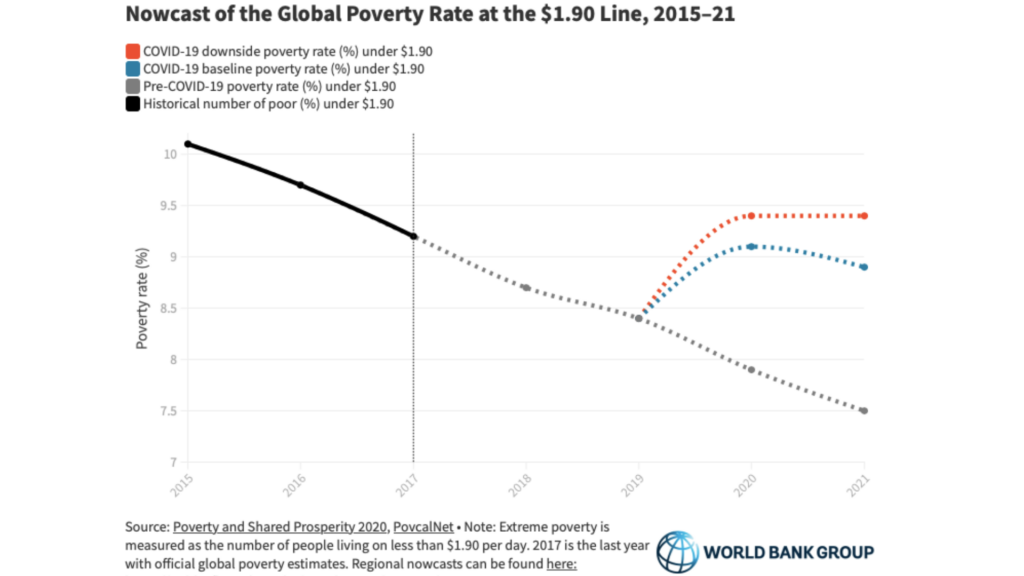The International Poverty Eradication Day held annually on October 17th. To mark the day, we are sharing 3 things we all should know about world poverty that provide perspectives on efforts to end global poverty.
The International Poverty Eradication Day held annually on October 17th. For almost 25 years, extreme poverty was steadily declining. This year, however, the quest to end poverty has suffered its worst setback. This setback is largely due to 3 major challenges : covid19, violent conflicts and climate change. These 3 major setbacks are extraordinary. While violent conflicts and climate change have been threatening poverty reductions for years, covid19 is the newest, and the most immediate threat.
Poverty Eradication and Covid-19
The impact of COVID-19 on poverty eradication will be swift and substantial. In 2020, the pandemic has drastically increased the number of people living in extreme poverty from 88 minion to 115 million (source : worldbank). The novel virus is disrupting everything from daily lives to international trade. The poorest are enduring the highest incidence of the disease and suffering the highest death rates worldwide.

The Poverty and Shared Prosperity 2020 report shows that the goal of bringing the global extreme poverty rate under 3 recent by 2030, already at risk before COVID-19 emerged, is now beyond reach without swift, significant, and substantial policy action. The World Bank estimates that 40 million – 60 million people will fall into extreme poverty in 2020, due to COVID-19 pandemic.
While the idea of poverty might seems far and unrelated for you, the truth is, your location doesn’t make poverty go away. To start with, here Are 3 things you should know about global poverty – even if it doesn’t stare you in the face :
1. Poverty is Multidimensional
We are used to thinking of poverty as a measure of income. However, poverty is much more than just a economic measure. Multidimensional poverty encompasses various deprivations experienced by people in their daily lives, such as physical and psychological ill-being, an unhealthy environment, lack of education, lack of food security, inadequate living standards, lack access to basic human rights, among others.
2. Development is a complex concept
Just like poverty, we tend to simplify the concept of ‘development’. Often, development is understood as a linear process of change towards higher GDP, industrialisation, economic growth, or western modernity.
The use of per capita GDP as the sole measure of development could, in reality, lead to increase social inequalities and poverty levels. When economic gains are not equally distributed and development is concentrated in the hands of few, inequality is inevitable. Development, therefore, is much more complex than numeric values and growth percentages.
3. Poverty Eradication requires everyone, including ourselves
Too often, there is a wide gap between public policies and citizens on who should be the one responsible in poverty eradication. While governments and responsible public policies have an important role to reduce poverty levels, they should not be the only one responsible for it.
The way we produce, purchase and consume directly affects poverty levels in our backyard (read : community) and country. We are the additional force with government to make sure that no one is left behind. The more we act responsibly, the more we can help reduce poverty levels.
Reversals of fortune and poverty eradication require collective efforts. Are you ready to play your role in eradicating poverty ? Share your comments below
The fight to end poverty begins with you. If you can help one poor person be gainfully employed, a world without poverty will not be a distant dream
Matshona Dhliwayo Tweet
Also Read :
Covid19 has clearly demonstrated that safe and accessible water, sanitation, and hygiene are crucial to saving lives. Find out why



